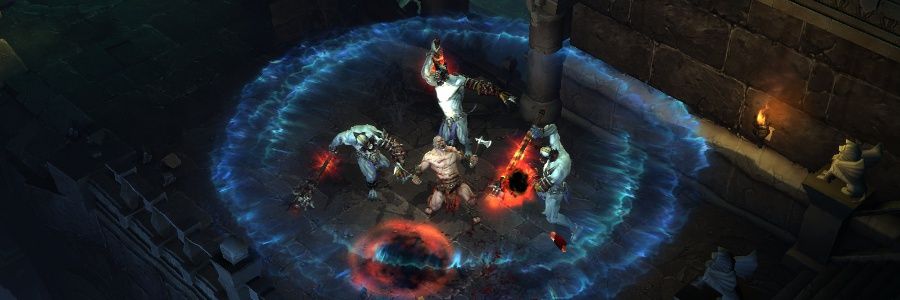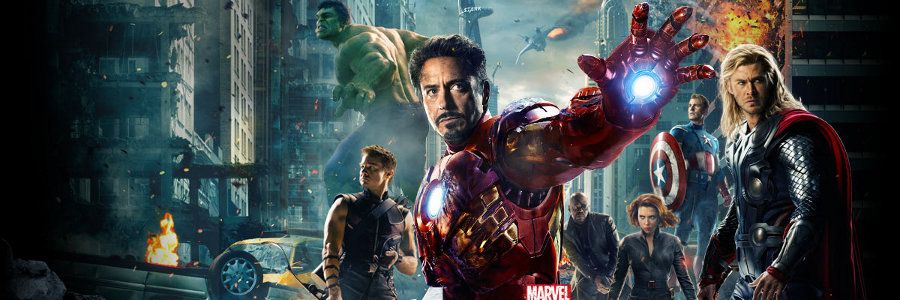 Last week
Last week we took a look at the webcomics engine
Zuda Comics, where every month a new group of ten comics competes for a contract with DC. While some critics have issues with this sort of
American Idol mentality in comics (either because of concern over creators rights being exploited or because of squeamishness over the idea of art being a competitive process), most creators rightly view Zuda as perhaps the single best means of breaking into the business today. Even if you don't win the competition, merely being accepted as a competitor guarantees widespread exposure within the comics community and tens of thousands of new eyes on your material.

In this episode of Breaking the Fourth Wall, then, we'll take a look at just what goes into crafting a successful Zuda submission. Of course, as I have yet to submit anything to Zuda, by definition this will be more theory than practice. However, some of my observations about the structure have been reinforced by my interview with pro writer and current Zuda competitor Tony Lee, so for another look at this topic you may want to
check it out if you haven't already.
So what is the key to a successful Zuda entry? Well, in broad terms, it's the same thing that is key to crafting a successful story for any medium, which is this: write for the structure. Every format of story, whether it's the novel, epic poem or mainstream comics, has a specific and unique structure that determines how the story is told and, perhaps more importantly, how the story is read. We've already discussed in previous episodes some of the specifics of writing for comics, but even though Zuda may seem at first to be a straightforward comic medium, it actually has some specific quirks that can greatly affect the success of your submission. And the first of these is actually the structure of the competition itself.
Eight pages isn't a lot to work with, but because of the nature of the competition, you meed to fit a lot of specific information into those pages while also maintaining readability and pacing. Your goal here isn't just to create something compelling to read; it's to create something that will compel the reader to want to read more. In effect, you have to do everything a mainstream comics writer has to do, but with only one third of the space to do it in. Crafting a satisfying Zuda submission, then, requires focus on three things: the hook, the setup and the tease.
The HookBack in the Golden Age, comics used a symbolic splash page to draw readers in -- it acted almost as a second cover, teasing what was going to happen later in the story, which would then actually start on page two. During the Silver Age, Marvel perfected the technique of opening right in the middle of the action with an action-packed splash and then filling readers in on how they got there. Today, comics often start with a tease: the first page of pages will be a slow build, hinting at what is to come, and then the payoff will come with a big reveal a few pages in.
While I don't think the symbolic splash will work for Zuda, either the Silver Age or Modern Age hooks can be done effectively at Zuda. From this months entries, for instance,
Impure Blood is a pretty good Silver Age style opening, with the reader jumping right into a massive gladiator battle right on the first page.
Doc Monster uses the more Modern approach, with two slow build pages teasing the reader's curiosity and then the third page being a big blowout sequence, with a flying saucers erupting from the ground.
For my money, though, the most effective opening this month is
Where Evils Dare, which is more in the Modern style as well. Page one shows some Nazis standing around talking, one of them is Dracula, it's kind of intriguing -- and then the second page is a full splash with hordes of Nazi zombie vampire dudes swarming forward. It's effective and visceral, but it also has another important quality: it's short. Just as the writer has fewer pages to work with, so too does the reader have fewer pages to get invested. A highly unscientific survey of comments on the Zuda boards indicates that a lot of readers just check out the first couple pages and if they don't like them they don't bother reading the rest of the entry. Even though eight pages doesn't seem like an overwhelming time commitment, it seems to me that on Zuda you probably only have two pages to hook your reader; as much as I enjoyed
Doc Monster, I think it might have been better served by getting to the flying saucer a page earlier.
Whether you go with a Silver or Modern Age approach, though, the lesson here is the same: craft a good hook and get the readers involved right away, because even if you have the greatest page four in comics history, chances are if your page two isn't awesome, nobody will ever get that far. (For examples of this month's entries that I don't think had effective openings, I think
Old Cthulhu's On the Rise took a little too long to get to the hook -- the fisherman guy didn't show up until page five).
The SetupEven in a short, eight page tease like this, you should look at the submission in terms of classic story structure, with a beginning, a middle and an end. Usually, this can be roughly described as setting up the conflict, exploring the conflict and resovling the conflict. In the case of a Zuda entry, though, the whole eight pages is part of the beginning of a longer story, so the "middle" here is where you set up the conflict that you will explore if you happen to win.
That means a couple specific things. Firstly, you need to introduce your characters or, if they appeared during the hook, you need to show the reader why they are the main character and why the reader should care. And secondly, you need to present the premise of the series: what the story is about, who is in it and how you as a creator are going to tell it.
In terms of examples from this month,
Doc Monster and
Where Evils Dare take slightly different tacks with this.
Where Evils Dare uses a fairly straightforward, classic style of comics storytelling; in the setting of a wartime mission briefing, we are introduced one by one to all of the characters and the premise of the series is literally spelled out by the officer giving the briefing.
Doc Monster, on the other hand, presents the information through the use of narrative captions; while the characters are battling aliens in an action sequence, one of them gives an internal monologue commenting on the action and, more importantly, his co-star. The result is that the story doesn't bog down with exposition, as the reader is carried along by the action, but at the same time we still get an idea about what both characters are like and what the series is going to be about. While I think
Where Evils Dare is a well crafted submission, in this case I think
Doc Monster comes out slightly ahead and will be more readable for many modern readers.
(For an example of a current Zuda entry that did not have a proper Setup,
A Polar Nightmare is probably the clearest example. After eight pages I'm still not really sure what the story is about other than there's an evil Santa involved somehow)
The Tease And, of course, you have to go out with a bang in order to get your readers wondering what's going to happen on the next page. The cliffhanger is one of the oldest elements of serialized storytelling in literary tradition, so it's no wonder that most of the entries on Zuda do a pretty good job with it; even submissions that otherwise aren't particularly well crafted usually manage to end on a tease for future pages.
The main mistake Zuda creators seem to make is treating the entire eight pages eight pages as the tease. In a meta sense, as I've already discussed, this is true; but what ends up happening in many entries is that the first seven pages are slow buildup to the cliffhanger on page eight and, for reasons I've gone over, this doesn't work because most readers won't get to page eight if you do this.
Impure Blood, Doc Monster, Where Evils Dare and
Pluck all end on solid teases this month, while
A Polar Nightmare is an example of an entry where the entire story seems to be a tease.
I also wanted to mention
Blitz, which runs into a less common issue at Zuda, which is a story that doesn't seem to have been specifically crafted for the Zuda format. In this case, the tease at the end almost seems tacked on at the last minute, with one of the characters randomly finding a newspaper in the last panel that tells them some shocking information. This is part of why I think it's important to create a story specifically for Zuda, because if you don't take into consideration the specific structure requirements of the competition you may end up with a story that is well written and well drawn but that still fails because it was intended for a different format.
Page StructureI know what you're thinking: you're not done yet? Well, I do have a couple more things to mention about the unique challenges presented by Zuda. But these are more nuts and bolts comments about the technical details of working with something that has befuddled and irritated thousands of people over the last two years: the Zuda page viewer.
Not that there's anything wrong with it; I happen to find it intuitive and perfectly functional. But it also has a couple minor details about it that might at first slip by without notice but which can be very important to writing a successful submission, the first and most important being the shape of the page.
When I asked
Where Evils Dare writer Tony Lee about this, he deferred to his artist, Stefano Martino. And if you are a successful artist or are working with a someone experienced in layout, this will be less of an issue. Even so, as a writer, when you are planning sequences within your story you need to always be aware of just how this will be portrayed visually on the page. And that's a bit tricky on Zuda because of the horizontal page shape for two reasons. Firstly, as a comics reader, we've simply been trained over however many years to think of comic books in terms of a vertical page, so figuring out panel sequences in a horizontal setting can prove challenging. Secondly, though, and more subtly, the horizontal structure isn't necessarily as conducive to action simply because the human form is vertical in nature. If you have people running or jumping or fighting, being able to show them in a vertical panel is simply more natural than trying to fit a vertical shape into a horizontal panel, because their body will basically bisect the frame.
I won't get into it too much here, but I wanted to mention this difficulty because I think the creator needs to be thinking about this from the moment they begin crafting a Zuda submission. The structure has to come first and in this case you will want to work very closely with your artist in planning page layouts and choreographing action sequences; or if you are drawing it yourself, you'll need to be careful figuring out how to make the sory flow not just between panels, but in this case within panels as well.
Lastly, the Zuda viewer also presents a slightly different experience form a traditional comic book because it only shows one page at a time, whereas comics sometimes show two. Sure, you're only reading on at a time in a comic book, but for a writer this is important because of a technique I haven't had a chance to discuss much yet, which is the last panel tease. Basically, when you're writing a story and you get to a page break -- where the reader has to literally turn the page to get to the next part -- it's a good idea to put a small tease, such as a mini-cliffhanger or perhaps an interrupted dialgoe balloon (where the sentence is completed on the following page) in order to get the reader to turn the page instead of putting down the comic. Zuda, though, only shows one page at a time, meaning you need to always be aware of every page ending. With many readers only giving these submissions a brief test before even reading eight pages, it's especially important that every page end with a lead into the next page in order to convince them to hit the Next arrow and keep reading. It means being somewhat more careful with pacing, but if you want to ensure readers stay engaged, it could be vital.
ConclusionTo sum up, then, to craft a successful Zuda submission you need to draw the readers in quickly, introduce the plot and concept of the series, show them who the characters are and why they should care, and end with a cliffhanger tease to get them wanting more. This needs to be done in eight pages, using unfamiliar page shapes, panel layouts and page counts. Because of this, when you write a story for Zuda, you need to do that: write it for Zuda specifically with Zuda's unique challenges in mind. Otherwise you risk crafting a story that may be great, but might never be read.
 In today's fast paced, internet society, time spent analyzing and examining is time wasted, because there's always something new and exciting coming down the pike that is shinier, bigger and, well, newer than the last. This is especially true, of course, of the film industry, which has lasted for a century on the idea that audiences always need new product. But now the question is, who has time to watch a whole movie, much less spend precious minutes reading a review of it?
In today's fast paced, internet society, time spent analyzing and examining is time wasted, because there's always something new and exciting coming down the pike that is shinier, bigger and, well, newer than the last. This is especially true, of course, of the film industry, which has lasted for a century on the idea that audiences always need new product. But now the question is, who has time to watch a whole movie, much less spend precious minutes reading a review of it? 

















































